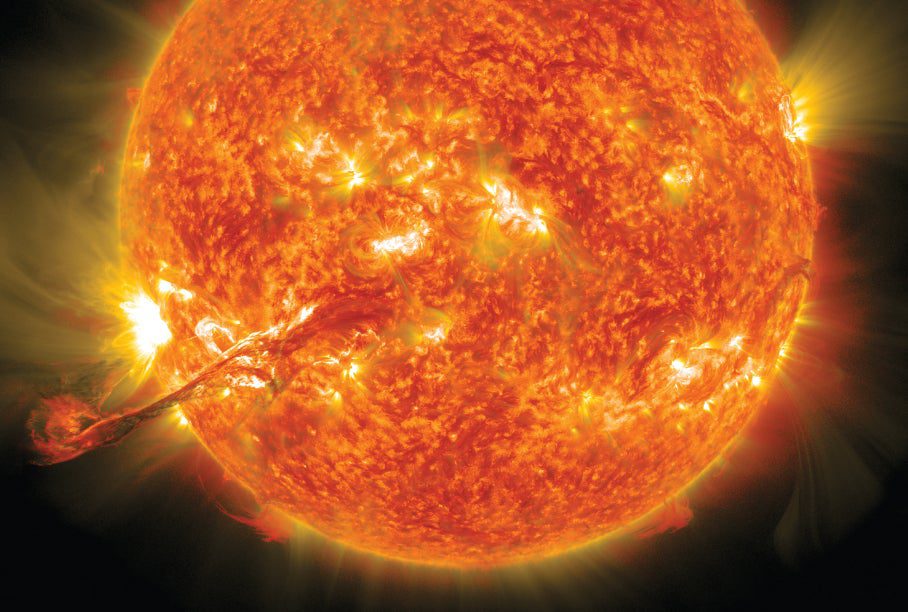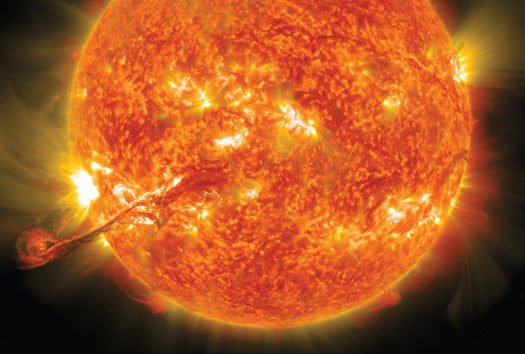
Star Burst
On August 31, 2012, more than one billion tons of plasma exploded from the sun’s surface and began speeding toward Earth at approximately three million mph. Unlike a solar flare, which is a burst of extreme radiation, a coronal mass ejection (CME) is an eruption of million-degree electrified gas. Because the sun spins faster at its equator than at its poles, its magnetic fields twist to the point of breaking as often as three times a day. When they reconnect, the energy involved pushes plasma clouds into space.
A camera aboard NASA’s Solar Dynamics Observatory satellite captured this 200,000-mile filament right before it detached; a 304-angstrom-wavelength filter enabled scientists to see the plasma. Three days later, the CME produced a benign effect: auroras over the Northern Hemisphere.









